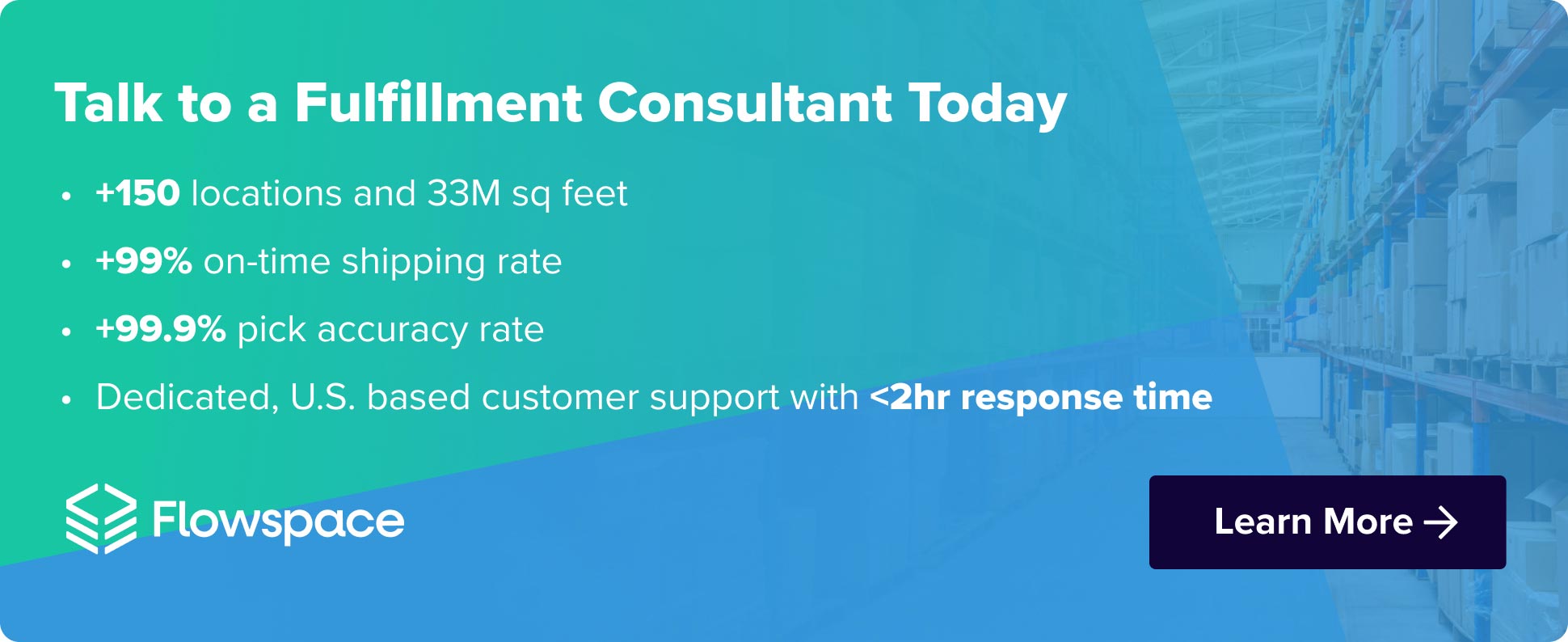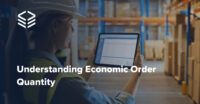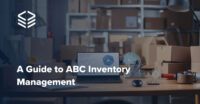
Picture this: Your online store is buzzing with eager customers, ready to make purchases. Suddenly, disaster strikes—you run out of your best-selling item. Customers abandon their cards and leave, frustrated by a missed opportunity and less likely to return. It’s every ecommerce business owner’s worst nightmare.
Inventory management and inventory planning is a delicate balancing act. And the stakes are high: falling short on inventory leads to missed opportunities such as failing to meet customer demands, and can cause overall frustrated customers, while overstocking drains your capital and heaps on storage costs.
Striking the perfect balance between these two extremes is an art form that can make or break your success. Enter the Economic Order Quantity (EOQ)—an innovative concept that can revolutionize the way you manage and optimize your inventory.
What is the Economic Order Quantity?
The EOQ is the optimal amount of inventory to minimize inventory holding costs, and ordering costs. Ordering costs include things like processing fees, shipping charges, and staff time spent placing orders. Holding costs, on the other hand, encompass storage fees, insurance, product deterioration, and the opportunity cost of capital tied up in inventory.
EOQ considers two key factors:
- Ordering costs: This includes expenses like processing fees, shipping charges, and labor involved in placing an order.
- Holding costs: These are the costs associated with storing inventory, such as warehouse space, insurance, and potential product obsolescence.
By finding the EOQ, you can achieve a sweet spot where you order enough to avoid stockouts but not so much that your holding costs skyrocket. Learn more about inventory carrying costs in our blog.
Breaking Down the Economic Order Quantity Formula
The EOQ formula is a simple mathematical equation that takes into account three key factors:
- Demand Rate (D): This represents the annual demand for your product, measured in units.
- Setup Cost (S): This is the fixed cost associated with placing an order, regardless of order size.
- Holding Cost per Unit (H): This represents the annual cost of holding one unit of inventory, expressed as a per-unit cost.
The EOQ formula is a powerful tool, but it’s just the first step. By understanding the nuances of Demand Rate, Setup Costs, and Holding Costs, you can fine-tune your EOQ calculations and achieve true inventory optimization.
Demand Rate
Demand is the number of units you sell annually, and accurately predicting it is vital for calculating the optimal EOQ. Here’s how to master the art of demand forecasting:
- Historical data: Analyze past sales trends to identify seasonal fluctuations, promotional impacts, and any external factors that might have influenced demand.
- Market research: Stay updated on industry trends, competitor activity, and consumer preferences to anticipate future consumer demand shifts.
- Statistical forecasting techniques: Utilize tools like exponential smoothing or ARIMA models to analyze historical data and generate forecasts based on statistical patterns.
- Collaboration: Involve marketing, sales, and operational teams to share insights and create a holistic view of expected demand.
Setup Costs
Setup costs encompass all expenses incurred when placing an order, including:
- Processing fees: Administrative costs associated with order processing by your supplier or distributor.
- Shipping charges: Transportation costs incurred to get your inventory from the supplier to your warehouse.
- Labor costs: Time and resources spent on tasks like order placement, communication with suppliers, and receiving inventory.
Remember, reducing the number of orders through larger EOQs can significantly decrease setup costs. However, keep in mind:
- Minimum order quantities: Some suppliers have minimum order requirements that can influence your EOQ calculations. Learn more about minimum order quantity in our blog.
- Bulk discounts: Larger orders may qualify for quantity discounts, potentially offsetting higher setup costs.
Holding Costs
Holding costs represent the ongoing expenses associated with storing inventory, including:
- Warehouse space: Rent, utilities, and maintenance costs for your storage facilities.
- Insurance: Protecting your inventory against damage, theft, or obsolescence.
- Capital costs: The opportunity cost of money tied up in unsold inventory.
- Product obsolescence: The risk of your inventory becoming outdated or losing value over time.
Managing holding costs effectively is crucial. Consider:
- Inventory turnover: Regularly review your inventory and implement strategies to sell older stock faster. Having an improved stock rotation process can reduce long term costs.
- Negotiate storage fees: Negotiate better rates with your warehouse provider based on volume or contract length.
- Just-in-time inventory: Explore lean manufacturing practices to minimize holding costs by receiving inventory closer to when it’s needed.
EOQ Formula in Action
The formula itself is: EOQ = √ [ (2 x S x D) / H]
Let’s say you sell phone cases and your annual demand is 10,000 units. Your setup cost per order is $20, and your annual holding cost per unit is $1. Plugging these values into the formula:
EOQ = √(2 x 10,000 x 20) / 1
EOQ = 282.84
Your optimal order quantity would be approximately 283 units. This means you should order 283 phone cases at a time to minimize your total inventory costs.
While the EOQ formula is a valuable tool, it’s important to remember that it’s a simplification. In reality, real-life factors like lead times, order discounts, and safety stock requirements can influence your optimal order quantity. Additionally, the EOQ assumes constant demand and holding costs, which may not always be true.
Significance of EOQ in Inventory Management
Why should you, the savvy ecommerce entrepreneur, care about EOQ? It’s not just about math equations; it’s about unlocking the potential for significant cost savings and optimal inventory management.
How EOQ Helps Minimize Inventory Costs
Imagine a world where you don’t have to worry about overstocked warehouses or stock outs that leave customers frustrated. The EOQ helps you achieve this balance by:
- Minimize ordering costs: Fewer orders mean less processing, shipping, and labor expenses. It’s like buying in bulk at the grocery store, but without the questionable candy choices.
- Reduce holding costs: Smaller inventory levels translate to lower storage fees, insurance, and the risk of outdated stock (think fewer last season’s jeans and more trending tech gadgets). Overall this can lead to a lower total inventory cost.
- Optimize capital allocation: By tying up less money in inventory, you free up resources for other areas, like marketing campaigns or expanding your product line (think investing in customer experiences instead of a warehouse full of hula hoops).
EOQ’s Role in Preventing Stock Outs and Overstocking
Running out of stock can be disastrous, leaving customers frustrated. But fear not, EOQ can be your safeguard against stockouts. By precisely calculating your optimal order quantity, you ensure you have enough product on hand to meet demand consistently. Learn more about how to avoid stockouts in our blog.
On the flip side, overstocking is like inviting a financial monster to your warehouse party. Excess inventory levels ties up capital, eats up storage space, and increases the risk of obsolescence. The EOQ helps you strike the perfect balance, ensuring you have enough stock without becoming a hoarder.
Disadvantages and Limitations of Using the EOQ Model
While the EOQ is a powerful tool, it’s important to acknowledge its limitations:
- Assumptions can be tricky: The EOQ formula assumes things like constant demand and holding costs, which aren’t always the reality. Seasonal fluctuations or unexpected trends can throw your calculations off.
- Real-world complexity: Discounts, lead times, and minimum order quantities can complicate your EOQ journey. It’s not a one-size-fits-all solution, and flexibility is key.
- Advanced models exist: While the basic EOQ is great, more complex models incorporating lead times and discounts can offer a more nuanced picture. But remember, complexity comes with its own set of challenges.
These limitations highlight the importance of using the EOQ as a starting point, not an absolute answer. Consider incorporating:
- Safety stock: Adding a buffer to your EOQ to account for unexpected demand surges.
- Advanced EOQ models: These models factor in lead times, order discounts, and other variables for more accurate calculations.
- Regular monitoring and adjustments: Continuously monitor demand, costs, and lead times to adapt your EOQ as needed.
Optimize Your Inventory with Flowspace
While using the simple EOQ formula provides a valuable starting point, Flowspace is here to be your guide and equip you with the ultimate weapon: a customized EOQ strategy that takes your inventory management to new heights.
One of the key features of Flowspace’s platform is real-time inventory visibility with our inventory management software. By providing instant visibility into stock levels and location, brands can avoid stockouts and ensure prompt and accurate fulfillment of orders—no guesswork needed. Plus, the platform sends alerts when inventory levels are low, empowering brands to reorder products before they run out.
Flowspace’s platform also leverages historical sales data and other factors to help forecast future product needs and create a customized EOQ calculation. This means brands can avoid overstocking, saving them money on unnecessary inventory costs. Whether your brand is just starting out or already a large enterprise, Flowspace’s platform is designed to scale according to your business needs.
Discover how Flowspace’s order fulfillment software can take you beyond a simple EOQ calculation. Contact us today to learn more.







